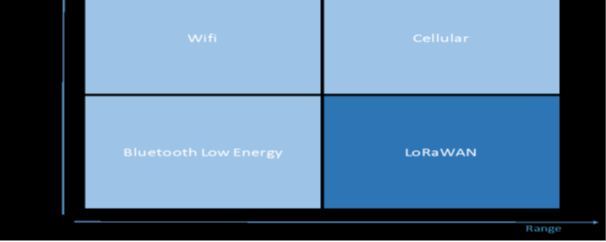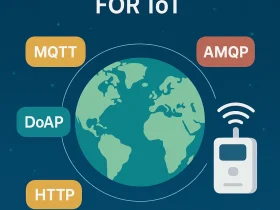What Is LoRa technology?
LoRa (short for Long Range) is Long Range and low energy radio RF technology developed by Semtech,
It is an emerging physical solution and provides communication protocol through LoRaWAN (Low Power Wide Area Network).
LoRa IoT network technology implements a star topology.
LoRa Technology based on spread spectrum modulation techniques and derived from CSS technology (chirp spread spectrum).
It is a low-power wide area network because of FSK modulation for achieving low power and significantly increases communication range based on Spread spectrum modulation ( signal with a wider bandwidth).
It is mostly accepted because of its ADR, Range, Capacity,2-way communication and robust to an interface.
Maximum data transfer rate is 50kbps i.e not good for high data rates. Key use cases for LPWA networks include applications for Smart Cities such as smart parking, intelligent street lighting, supply chain management with asset tracking & condition monitoring, smart grids with electricity, water & gas metering, smart agriculture with land condition monitoring or animal tracking and geofencing.

Sensor node:
MCU : STM32L151C8 – 64K FLASH
10K RAM
Timers, SPI, I2C, USART,
USB 2.0 full-speed device/host/OTG controller,DAC, ADC, DMA
RADIO : SX1276
ANTENNA : Printed circuit antenna
BUTTONS : Power ON/OFF, General purpose button
LEDS : 3
SENSORS : Proximity, Magnetic, 3 axis Accelerometer, Pressure,Temperature
GPS : Yes, SIM39EA module
SDCARD : No
EXTENSION No
REMARK : The Radio and MCU are on the NYMTEK Cherry-LCC module
LoRaWAN:
LoRa physical communication layer standardizes & extend onto the internet networks by adding a MAC layer, this MAC layer called as LoRaWAN.
The LoRaWAN protocol has several wireless networks features such as
- End-to-end (E2E) encryption and security
- Adaptive data rate optimization,
- Quality of service, and other advanced communication applications.
In a LoRaWAN network system, all base stations collaborate and are collectively seen by end-devices as ‘the network’.
All network messages are managed by a centralized network controller function.
Migrating existing consumer Wi-Fi devices to LoRaWAN
• Does the device require high data bandwidth?
• Does LoRaWAN require real-time communication with a smartphone?
• Should it be able to connect to the Internet without the support of a local bridge (smartphone or internet box)?
• Would the device be enhanced by lower power consumption or wider connectivity coverage?
See also: Low cost, Arduino supported LoRa Development Kit with powerfull Cortex M0 Controller
Let us know what you think about LoRa IoT Network technology and in the comment section below.
If you like this article subscribe our YouTube Channel for IoT video Tutorials.
Featured Image Credit: LoRaAlliance










Nice information.Thanks for sharing
Welcome & Thank you for reading.